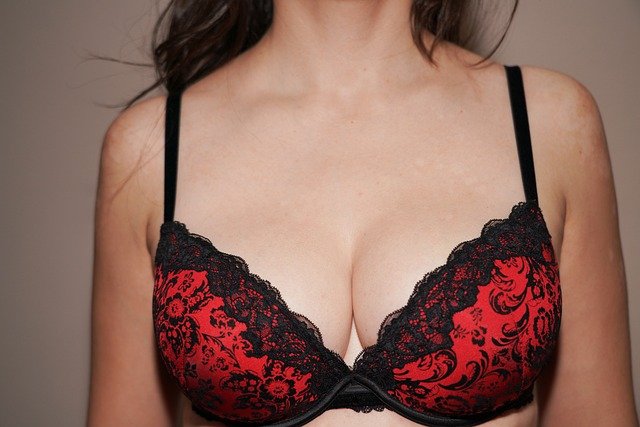Sheer Bra-Panty Guide: Materials, Fit, Styling, Care, and Buying Tips
Sheer bra-panty sets balance delicacy and practicality, offering options that range from whisper-light mesh to embroidered lace. This guide explains how transparency, construction, and fit work together, with tips on styling for everyday wear or occasions. You will also find care advice and ethical buying pointers to help build a thoughtful lingerie wardrobe.

Sheer Bra-Panty Guide: Materials, Fit, Styling, Care, and Buying Tips
Sheer lingerie spans a wide spectrum, from barely there mesh to ornate lace with strategic coverage. Beyond aesthetics, the best choices combine comfort, support, and practicality for different settings. Understanding how fabrics influence transparency, what good construction looks like, how to gauge fit, and how to style and care for pieces will help you choose sets that feel good and last longer.
What defines sheer bra‑panty sets?
Sheer sets use lightweight, translucent textiles such as mesh, lace, and tulle. Transparency ranges from ultra sheer to semi opaque, often varying within one garment through double layers, embroidery, or power mesh panels. Types include soft cup bralettes for light comfort, underwired bras for shape and lift, and high leg or cheeky briefs for minimal coverage. Intended uses differ: some designs are suitable for everyday wear under tees, while others are better for special events or layered outfits. Consider the context, desired coverage, and activity level when deciding how sheer to go.
Materials and construction: transparency and support
Fabric choice drives both look and performance. Fine mesh and tulle deliver high transparency and breathability, while stretch lace adds visual texture and moderate coverage. Power mesh or lined cups can increase support without adding bulk. Look for elastane or spandex blends for recovery that keeps shape through wear. Construction details matter: multi part cups with vertical or diagonal seams shape tissue, underwire anchors the cup, and a firm band provides most of the support. Quality signs include smooth, secured seams, lined gussets in panties, stable elastics, and metal hardware that resists bending. If a style feels flimsy in hand, it may lose structure quickly.
Fit and sizing: how to measure and adjust
Accurate sizing starts with a flexible tape. For bras, measure snug underbust for band size and full bust at the fullest point for cup volume; the difference between these measures helps guide cup sizing systems. Fit checks include a level band that stays parallel to the floor, a center gore that rests gently against the sternum on wired styles, cups without gaping or spillage, and straps that support without digging. Sister sizing can help fine tune: moving one band size up and one cup letter down, or vice versa, maintains similar cup volume while changing band tension. For panties, measure the fullest part of the hips and consult brand charts, noting that high rise or string styles can feel different on short or long torsos. Comfort details like cotton gussets, flat seams, and soft elastics reduce irritation.
Styling and practical wear: layering and pairing
Styling sheer lingerie is about intention and context. Under light tops, a near skin tone set minimizes show through, while a contrasting color can be a deliberate accent beneath blazers, sheer blouses, or open knits. Layering tools include adhesive covers, lightly lined bralettes worn over sheer cups, or a thin camisole for modesty. Seam finishes influence visibility under clothing: bonded edges and laser cuts are discreet, while scalloped lace may add a soft outline that pairs well with textured fabrics. Consider outfit pairing such as high waist briefs with high rise trousers for smooth lines, or longline bras under structured jackets. For active days, choose supportive meshes or partial linings that resist stretch fatigue and keep shape during movement.
Care, longevity, and ethical buying
Delicate fabrics benefit from gentle care. Hand wash in cool water with a mild detergent, or use a mesh bag on a delicate cycle, then reshape and air dry away from heat to preserve elastics. Fasten hooks before washing to prevent snags, and avoid fabric softeners that can break down fibers. Rotate wear to let elastics recover, and store bras flat or stacked to protect cup shape; fold panties with lace inwards to shield edges. For longevity, mend loose threads promptly and replace overstretched elastics. Ethical buying considerations include looking for certified dyes and materials, recycled polyamide or polyester content, and brands that publish supply chain details. Choosing durable designs, inclusive size ranges, and repair friendly construction supports a more responsible wardrobe over time.
Understanding sheer sets in everyday life
Sheer pieces can be comfortable daily wear when chosen with purpose. If you want a light base layer, opt for soft meshes with supportive bands and cup seams rather than relying on straps alone. For modesty at work or formal events, aim for semi sheer designs with strategic embroidery or double layers. When opacity matters, color match to your skin tone or the outer garment; for creative styling, intentionally contrast hues. Because lighting affects visibility, check your set in natural and indoor light before heading out. With the right combination of fabric, fit, and styling, sheer sets can be both expressive and practical.
Choosing with confidence
Selecting sheer lingerie is an exercise in balancing transparency, support, and comfort. Focus on fabric quality and construction details, verify fit with simple checks, and experiment with layering to align coverage with your setting. Gentle care and mindful purchasing help each piece last longer while aligning with personal values. With these considerations, sheer sets can transition from special occasion items to versatile staples in a modern wardrobe.




